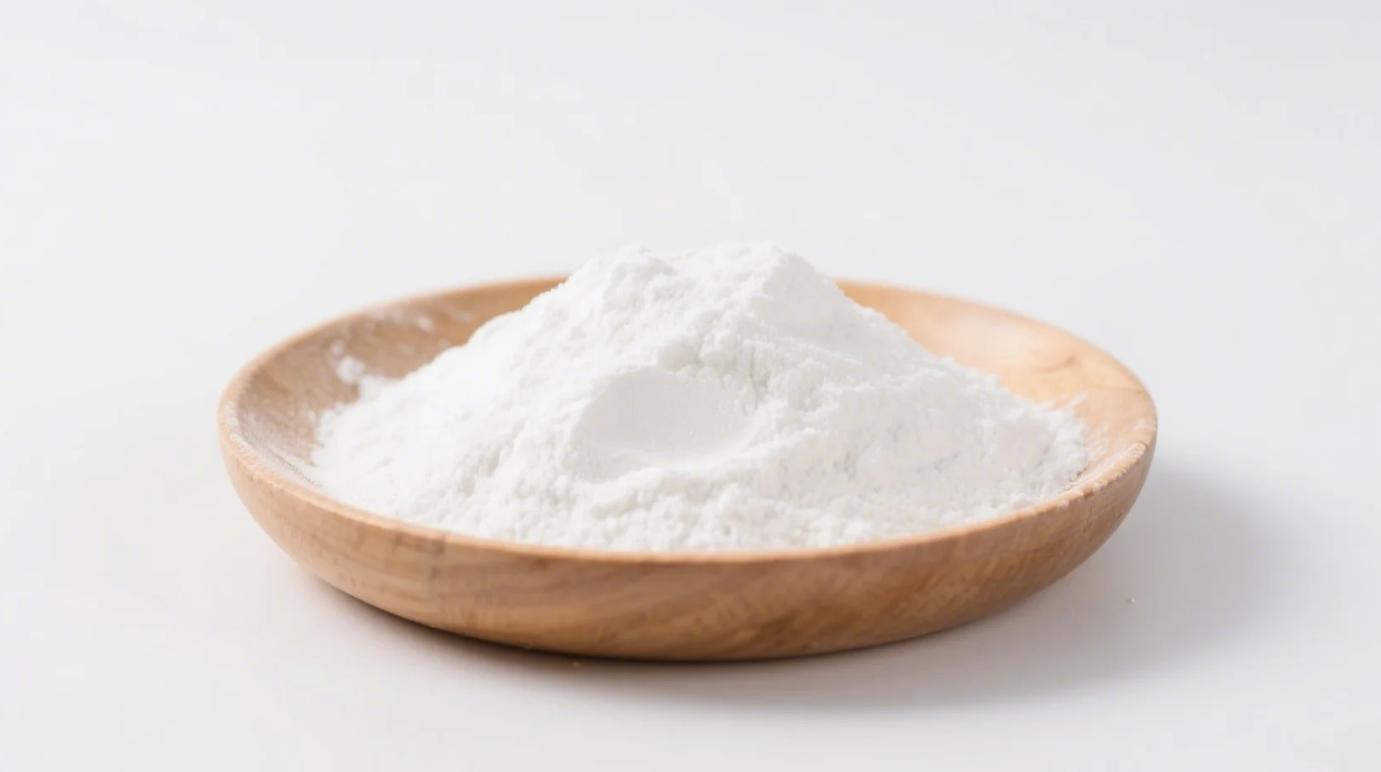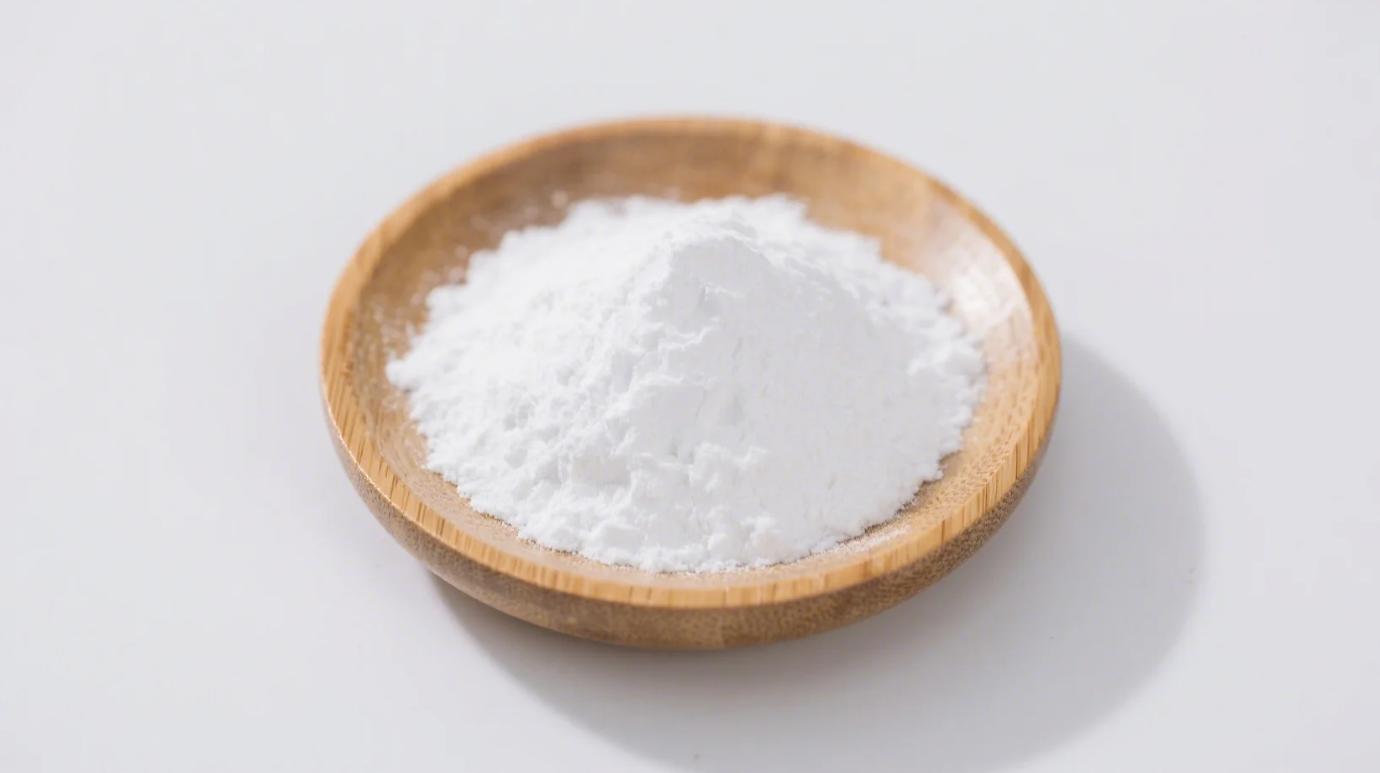Pea Starch 101: The Humble Powerhouse
Derived from yellow peas, organic pea starch is a gluten-free, non-GMO thickening agent stealing the spotlight from corn and potato starch. With 80% resistant starch (a prebiotic fiber) and a neutral flavor, it’s a go-to for clean-label sauces, soups, and gluten-free baking. But as its popularity grows, so does the question: Can pea starch trigger inflammation? Let’s dig into the science.
Inflammation Under the Microscope: The Pea Starch Paradox
1. The Blood Sugar Balancing Act
- Low Glycemic Index (GI 15): Unlike corn starch (GI 85), pea starch resists digestion, avoiding glucose spikes linked to chronic inflammation.
- Resistant Starch Boost: Feeds beneficial gut bacteria, producing short-chain fatty acids (SCFAs) like butyrate—proven to reduce gut inflammation (study: Gut Microbes Journal).
2. Anti-Nutrient Anxiety (Debunked)
Peas contain lectins and phytates, but:
- Processing Neutralizes Risks: Pea starch extraction removes 99% of anti-nutrients.
- Organic Advantage: No glyphosate residues (common in non-organic starches) that disrupt gut barriers.
3. Allergen Low Risk
- Pea Allergy Rarity: Affects <0.5% globally (vs. 1–2% for corn allergies).
- No Cross-Reactivity: Safe for most gluten/wheat-sensitive users.
Organic vs. Conventional: Why Purity Matters
| Factor | Organic Pea Starch | Conventional Pea Starch |
|---|---|---|
| Pesticide Residues | Zero (banned in organic farming) | Up to 8 detected (e.g., chlorpyrifos) |
| Processing | Enzymatic extraction, no bleach | Chemical solvents (hexane, sulfuric acid) |
| Resistant Starch | 80–85% (intact fiber structure) | 60–70% (damaged by harsh processing) |
| GMO Risk | None (non-GMO peas) | Cross-contamination from GMO crops |
Verdict: Organic processing maximizes anti-inflammatory benefits.
Pea Starch vs. Other Starches: Inflammation Face-Off
| Starch | Glycemic Index | Resistant Starch | Inflammation Risk |
|---|---|---|---|
| Organic Pea | 15 | 80% | Low (prebiotic SCFAs) |
| Corn Starch | 85 | 0% | High (blood sugar spikes) |
| Tapioca | 67 | 10% | Moderate (high GI) |
| Potato Starch | 95 | 5% | High (rapid digestion) |
| Wheat Starch | 85 | 2% | High (gluten cross-contam) |
Anti-Inflammatory Champion: Organic pea starch.
Who Should Still Be Cautious?
- SIBO/IBS Sufferers: High resistant starch may ferment excessively, causing bloating.
- Legume Allergy Warriors: Rare but possible pea protein traces.
- Low-FODMAP Dieters: Pea starch is moderate-FODMAP in >30g servings.
How to Use Organic Pea Starch Safely
- Start Small: 1 tsp in soups/sauces to test gut tolerance.
- Heat It Right: Mix with cold water first to avoid clumping.
- Pair with Probiotics: Yogurt or kefir enhances SCFA production.
- Bake Smarter: Substitute 25% of flour in bread for a fiber boost.
The Organic Edge: Beyond the Kitchen
- Eco-Friendly: Peas fix nitrogen in soil, cutting synthetic fertilizer use.
- Zero Waste: Starch production uses pea byproducts from plant-based protein mills.
- Kidney Support: Low potassium vs. potato starch—safe for renal diets.
The Verdict: Inflammation’s Quiet Foe
Organic pea starch isn’t just non-inflammatory—it’s a proactive ally against chronic inflammation, thanks to its gut-nourishing resistant starch and clean processing. While not 100% risk-free for ultra-sensitive guts, it outshines conventional thickeners in both safety and function. Swap your cornstarch for pea starch, and let your recipes—and your gut—reap the rewards.
Thicken wisely. Your body knows the difference.
References: : Resistant starch and SCFA studies (Gut Microbes Journal).
: Glycemic index database (University of Sydney).
: Organic vs. conventional processing (Journal of Food Science).
: Pea allergy prevalence (Allergy, Asthma & Immunology Research).
: Anti-inflammatory effects of butyrate (Nature Reviews Gastroenterology).
: USDA Organic standards (USDA).
: FODMAP classification (Monash University).
: Environmental impact of pea farming (Sustainable Agriculture Research).
: Renal diet guidelines (National Kidney Foundation).
: Pesticide residue risks (Environmental Working Group).
Related Products
Organic Potato Starch Powder
White powder, excellent thickening, USDA & EU Organic, vegan, non-GMO.
Organic Cornstarch
Premium Gluten-Free Thickener & Stabilizer for Food, Pharma & Industrial Applications
Organic Pea Starch Powder
Clean-Label, Non-GMO Thickener & Binder for Versatile Formulations



